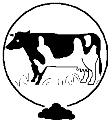Biological Systems Engineering, Department of

Manure Matters (newsletter)
Date of this Version
2002
Document Type
Article
Abstract
Phosphorus Risk Assessment Index Evaluation Using Runoff Measurements
Published by University of Nebraska – Lincoln’s Livestock Environmental Issues Committee. Manure and composted manure are valuable and renewable resources that can be effectively utilized for crop production and soil improvement. However, runoff from cropland areas receiving manure or compost may contribute to increased phosphorus (P) in streams and lakes. The main factors controlling P movement in surface runoff are transport (runoff and erosion) and source factors such as manure or fertilizer application method and rate, and soil P test level. Elevated soil P levels may result from application of manure at rates in excess of crop nutrient requirements. Research conducted by the authors indicated a significant accumulation of plant available P in the top 6 inches of soil following N-based beef cattle manure or compost application, but no accumulation occurred with P-based applications. Elevated soil test P levels have been shown to increase soluble P concentrations in runoff.
In many agricultural watersheds, total annual P transport occurs mainly from a few relatively large storms. In a study on a small upland agricultural watershed in Pennsylvania, it was found that the areas of runoff production, and consequently the areas controlling most P transport, are often a limited and identifiable portion of the landscape.
Natural Resource Conservation Service (NRCS) scientists developed an index to assess risk to surface water pollution by P. The index included both transport and source factors. The factors of erosion, runoff, soil test P level, P fertilizer application rate, P fertilizer application method, organic P source application rate, and organic P source application method were assigned weighted values of 1.5, 0.5, 1.0, 0.75, 0.5, 1.0, and 1.0, respectively. Each factor included several risk levels classified as none, low, medium, high, and very high, to which weight values of 0, 1, 2, 4, and 8 were assigned, respectively. By multiplying the weight value of each factor by its level weight a score is determined, i.e., for a soil with medium erosion, the erosion score is 1.5 X 2 = 3. By adding the scores for all factors, a site vulnerability index can be calculated. A low index value (< 8) indicates low P loss vulnerability while a very high value (> 32) indicates substantial vulnerability to P loss.
The factors that influence P loss from a field need to be tested so that the usefulness of the P risk assessment index can be evaluated. The weight values for the variables used in the P index should also be examined. The objectives of our study were to examine the effects of source and transport factors on P loss from three sites that had received beef cattle manure, composted manure, or inorganic fertilizer, and to evaluate the P index with measurements obtained from three rainfall simulation studies.


Comments
Published by University of Nebraska – Lincoln’s Livestock Environmental Issues Committee.